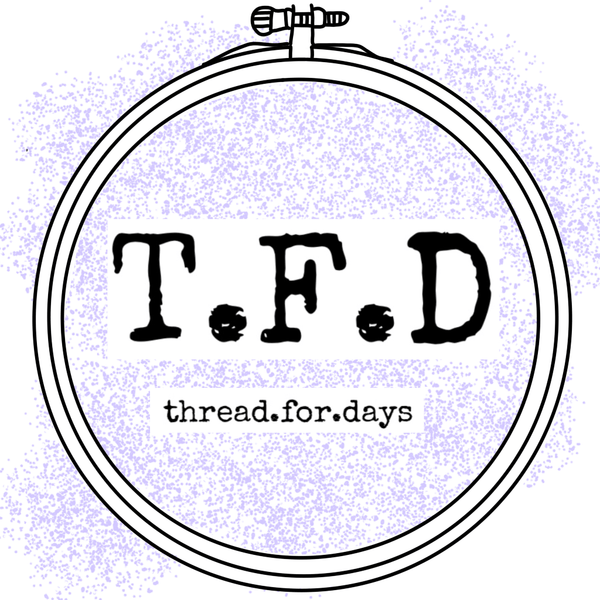There is no wrong way to "Hoop Butt", do what works best for you!

Hello and welcome to another embroidery DIY post; this time I talk hoop butts (the back of an embroidery hoop) and finishing a hoop.
Most embroiderers have their own favorite way of finishing a hoop and I wanted to talk about some of the options, my own preferences, and how to choose what is best for you!
In this post I am going to look at covered and uncovered hoop butts, break down some (this is not an extensive list) common ways to finish the back of your hoop, and list the pros and cons of each.
To Cover or not to cover....that is the aesthetic choice

Covering or not covering does not matter, it is really just a personal preference and aesthetic choice.
Though there are some benefits to covering:
- hide mistakes
- makes the piece less see through when using thinner fabrics
- gives you the ability to "stamp" add your logo or signature to the back of a piece more freely
- can feel more professional to some people
I personally really love the look of an exposed hoop butt!
For me the back of the hoop shows the work that I put into the piece. People can see my knots, my stitch choices, my approach to the work; I love the story that an exposed hoop tells.
Yes, it does make it a little bit harder to "sign" my work, but hey I have prime real estate in the hoop ring:

So the first choice in figuring out how to "finish" your hoop is to choose; covered or uncovered?
Some Uncovered Finishing Options
There are a couple methods to finishing the back of your hoop, but still keeping it exposed; stitching vs gluing method.
Running Stitch Method
Pros:
- This method is better for the longevity of the fabric
- no additional material needs to be sourced
- looks cool/easy to do
- still get to see most of the hoop butt
- gives you the option (if you wanted it) to remove the design from the hoop later.
Cons:
- Can cause the piece to not sit flat on a wall (back sticks out a bit)
- not all of the hoop butt is visible
Glue Method
*NOTE* In the video the artist uses a second piece of fabric to hide the stitching- no need to add the extra fabric.
Pros:
- Sits well on a wall
- can clearly see the back of the hoop
- quick method
- permanent method (if you want that)
Cons
- depending on the glue used it can affect the fabric over time(acidic glue will discolor the fabric) be sure to use fabric glue!
- permanent solution, fabric cannot be removed later (con if you wanted the option)
Covered Finishing Options
Felt Backing
Take your running stitch one more level up and add a felt backing:
Pros:
- Swanky finish!
- easy to customize the felt backing (add a logo or signature)
- flattens the back (see running stitch exposed back con) so it lays flatter on a wall
Cons
- No exposed hoop butt :(
- more time consuming
- moderate difficulty (stitching)
Cardboard backing
(Shopify won't let me embed my video BUT click the image to head over to the tik tok)
Pros:
- SUPER QIUCK
- Can easily stamp your logo/add a signature to the back
- Easy way to cover a hoop back for a tidy finish
Cons:
- short-term method
- Can still be easily removed
- may cause bulging/visible fabric on the front of the hoop. (especially if using a thinner material)
- Regular cardboard is high in PH and will discolor and damage your fabric overtime. Be sure to use a non-acidic cardboard for longevity.
- no exposed hoop butt!
There you have it!
We talked about exposed vs. unexposed and given some options on backings for each; ultimately the choice is yours! Do what you think would be best for your hoop pieces and what feels right for you.
Stay weird and wonderful,
~Kass (They/She)


